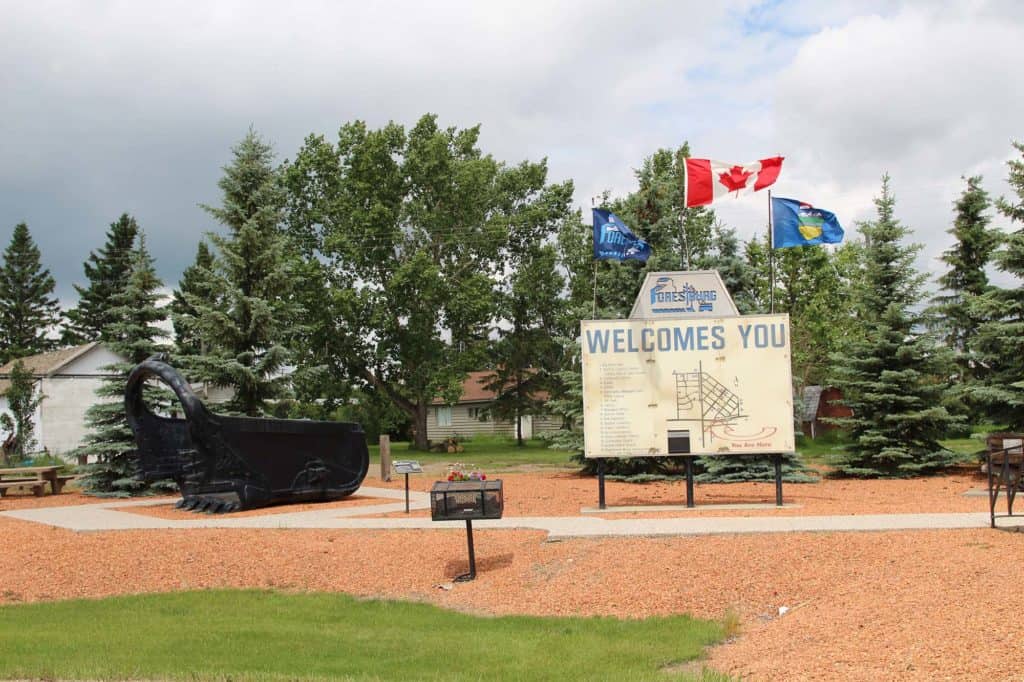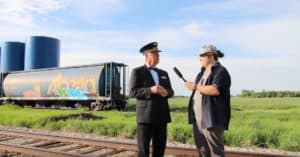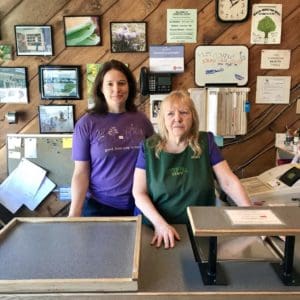The landscape of the Battle River region is a combination of trees, marsh and long stretches of rolling hills. A unique intersection of the south-eastern grasslands and the Rockies in central Alberta, the region has fostered a variety of industries — with energy, manufacturing, and agriculture at the top.
With just 2% of the Alberta population the region is a picture of prairie resilience, having exceeded expectations for such a small population. We believe this excellence stems from a rugged attitude and strong work ethic. The Battle River Railway Co-operative is a perfect illustration of these traits.
The community that bought a railroad
When CN threatened to close the short line railway between Camrose and Alliance Alberta, farmers worried. They didn’t want to have to drive their grain further to get it to a rail car to ship it to market.
Luckily, CN had to put the line up for sale before closing it — and locals saw an opportunity. Ken Eshpeter, a local farmer, gathered producers together to discuss options. They decided to raise money by selling shares to attempt to save the railroad. $5 million later the group purchased the line and created a New Generation co-op called The Battle River Railway.
The purpose of the BRR is to run cars of locally produced crops to market using the rail line. Thanks to this co-op, locals created a spin-off organization that promotes tourism. Friends of the Battle River Railway takes people on train excursions up and down the line to see the local sights and learn some history.
We caught a ride on one of these themed excursions and were treated to not only an entertaining ride, but also a delicious supper in the town of Heisler! These excursions rely on volunteers (other than the conductor) and run monthly. You can learn more about the Friends of the Battle River Railway in my previous blog post.
Golfing in Forestburg
Following our day of riding the rails, Tanner and I spent the day learning more about the business that makes the rails possible and what drove people to save it. The Battle River Railway head office is a short drive from where we were staying in Camrose in the small town of Forestburg – population of 875 or so.
First stop was the golf course. To raise money, the co-op was hosting a golf tournament and we were scheduled to meet up with Bob Ponto, a BRR member and local farmer. We had wanted to meet a farmer member of the co-op to ask about the impact it has — it just so happened that the “BRR Farmers Golf Tournament” was going on when we arrived, which brought out people from around the community.
As we pulled in, it was immediately clear that BRR is an important part of Forestburg and the surrounding area. The place was hopping.
As we walked up to the clubhouse, which – with decidedly authentic rural efficiency —doubles as a curling rink. Bustling with farmers, a few of the volunteers we’d met on the excursion the day before, and BRR staff, the clubhouse was filling up as more and more people finished up their round of golf.
We then caught up with Bob, who spoke to how the railway makes for shorter trucking routes. By shortening how far he transports grain, he told us the BRR helps his business in several ways. He said this not only saves him time, but also a lot of money on things like fuel and repairs.
I got the impression that Bob believes in what the railway can do for the area, and the potential it has. He also likes seeing and hearing his investment in action.
“When I hear that train whistle it sounds like progress to me,” Bob remarked.
After wrapping up the interview we got a taste of truly heartwarming rural hospitality. The woman working behind the counterat the course had saved us each a piece of Skor cake from lunch. The cake was delicious and we left smiling — remarking about how much kindness we had run into during our travels.
Before meeting up with Matt Enright, General Manager of the BRR, we had some time to cruise around Forestburg. Among our stops were the LRT Cafe, the town’s highway-side diner. The coffee was great and it had all the trappings of a small-town diner — including some great smells coming out of the kitchen.
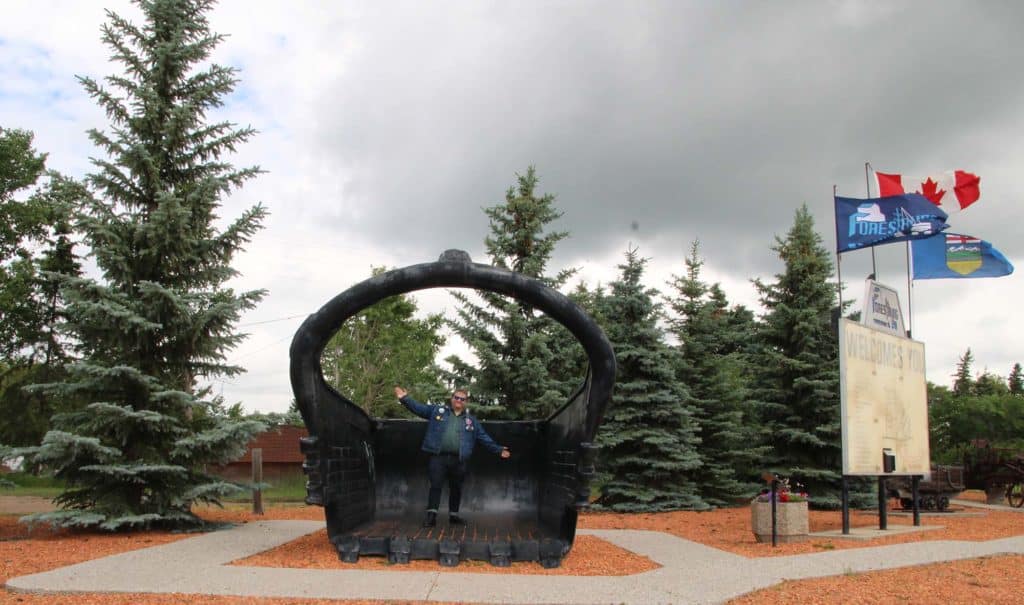
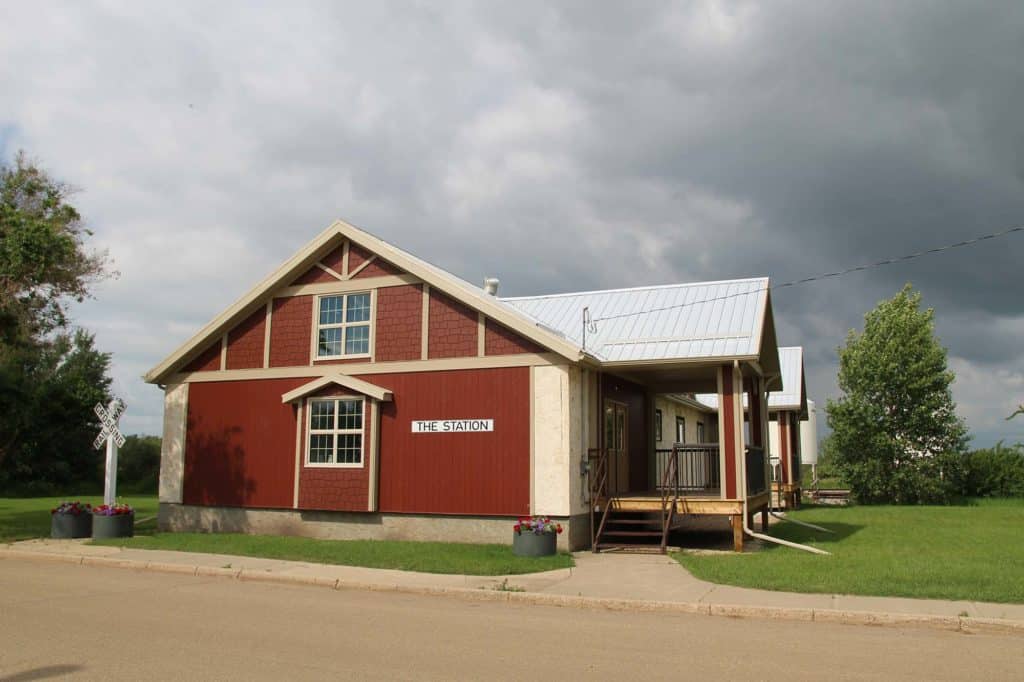
Behind the scenes of the BRR
Next we met up withMatt Enright,theGeneral Manager of the BRR, who gave us more insight into the business side of the rails. He talked not only about how the co-op gives locals a chance to invest locally — but also why preserving rural infrastructure is important:
Our last stop in Forestburg was a memorable one for me. We were driving back to Edmonton to prepare for hitting Sangudo the next day and were looking for a bite to eat. That’s when I stumbled upon the Social Butterfly.
Part diner part thrift/antique store, the Social Butterfly was an interesting spot with a wide range of unique and unusual things for sale – but what grabbed me most was the corn chowder on the menu. I love corn chowder as it’s what my mom used to make me for my birthday each year. I perused the shelves — which had finds like golf balls sold in egg cartons to a variety of dated decorations — as we waited for our bowls of corn chowder to arrive.
As we finished our bowls of soup there was only one thing left to do — hit the road. Next stop: Sangudo, AB!

 Written by
Written by 